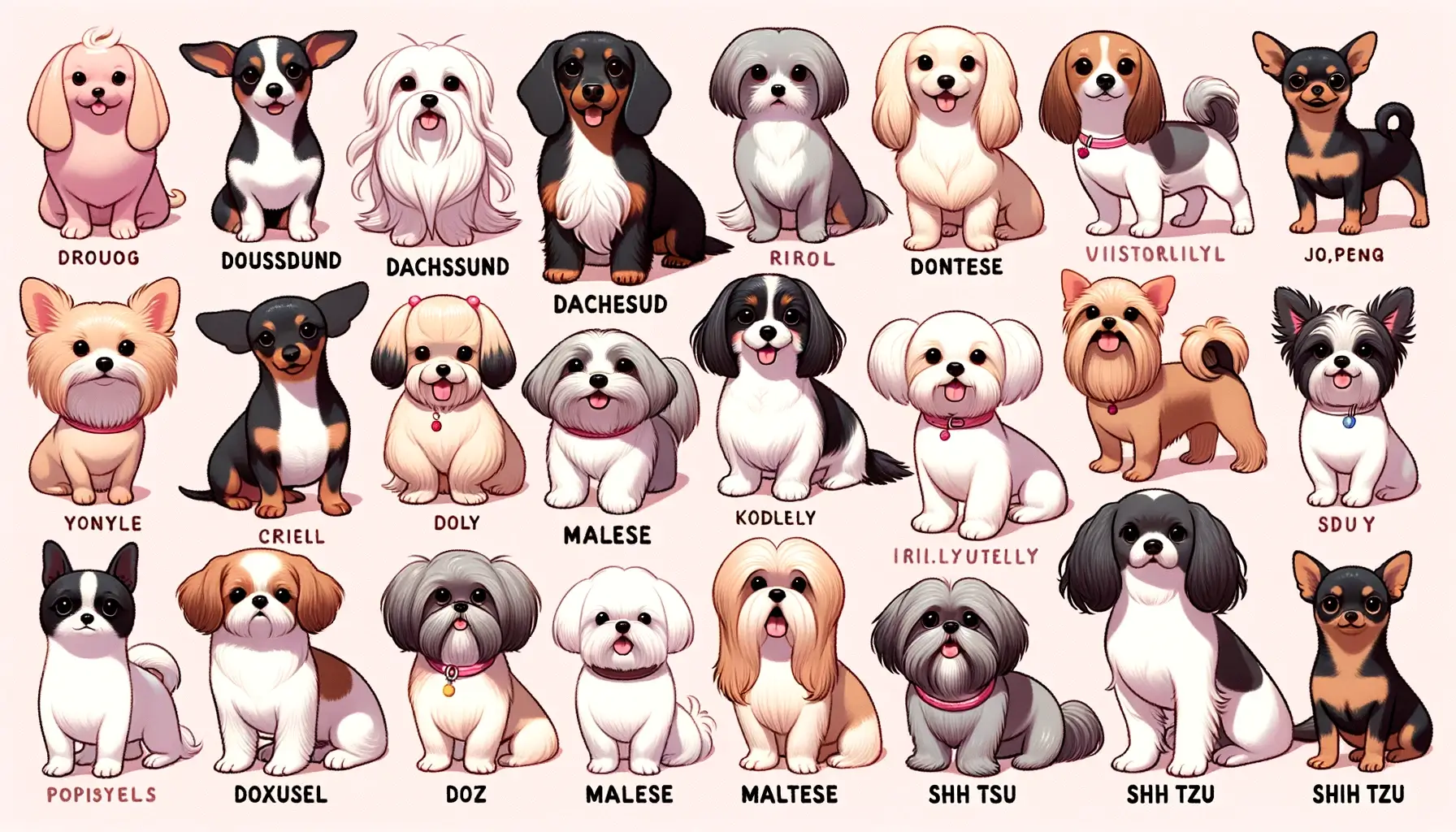In my journey through the world of canine companionship, I’ve had the privilege to delve deep into the realm of small dog breeds.
My attention was particularly captured by several endearing breeds such as the elegant Chinese Crested, the spirited Chihuahua, the regal Shih Tzu, the fluffy Bichon Frise, and the ever-adorable Pug.
Each of these breeds, with their unique traits and quirks, has left a distinct impression on me. What struck me most was not just their suitability for compact living quarters like apartments, but the sheer magnitude of personality packed into their petite frames.
Their vibrant characters, combined with their manageable sizes, have convinced me of the joys and advantages of owning a smaller dog.
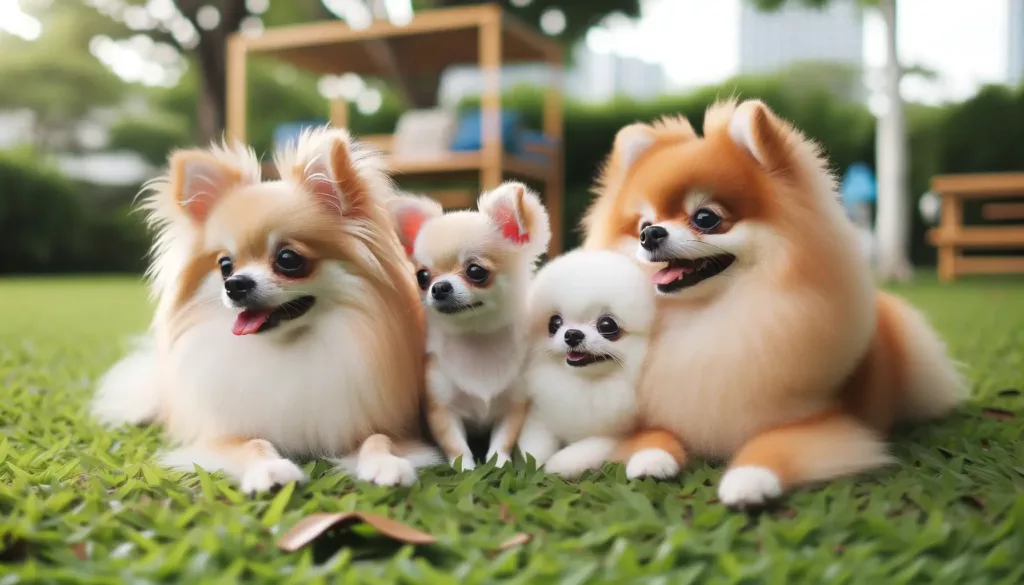
Small dog breeds are cherished for their portable size and larger-than-life personalities. These compact canines tip the scales at 20 pounds or less in adulthood, standing around 12 inches or shorter in height. Their diminutive dimensions make petite pooches ideal choices for city dwellers and those residing in apartments, condos, and other modest-sized living spaces.
While tiny in stature, small dogs have tremendous hearts and vibrant spirits. They form strong bonds with their owners and are eager to please. This comprehensive guide will highlight the many perks and joys of small dog ownership. It profiles 40 popular miniature breeds, exploring their origins, characteristics, and special considerations. Read on to find your perfect pint-sized pup!
What Defines a Small Dog Breed?
Generally, small dog breeds are defined as diminutive canines weighing 20 pounds or less once fully grown. They typically measure 12 inches or shorter in height at the shoulder in adulthood. However, exact size standards can vary slightly depending on the particular breed and kennel club.
For example, the American Kennel Club (AKC) includes breeds up to 35 pounds within the “small” designation. But for the purposes of this guide, focus will be placed on the tiniest pups in the toy, terrier, and companion breed groups.

Other common terms used to refer to petite pooches include:
- Compact dog breeds
- Petite dog breeds
- Miniature dog breeds
- Little dogs
- Small canine companions
- Diminutive dog breeds
- Pocket-sized dogs
While individual breeds display unique traits, tiny dogs share many common physical and personality attributes. Their compact frames and lower exercise requirements allow them to thrive in virtually any home, making them ideal choices for urban pet owners.
Why Choose a Small Dog Breed?
Prospective owners are often drawn to small dogs due to their pint-sized portability. But miniature breeds offer many additional benefits beyond their travel-friendly dimensions:
Adaptable nature
Small dogs tend to be highly versatile and able to adjust to any living environment. With minimal exercise requirements, petite pooches can live happily in apartments, condos, and small city homes where larger breeds may struggle.
Lively temperaments
What small dogs lack in physical stature, they make up for with oversized personalities! Miniature breeds are typically energetic, curious, and highly engaging companions.
Intensely affectionate
Due to their dependence on humans, tiny pups often bond very closely with their owners. They thrive when able to spend ample time with their beloved people. Small dogs soak up love and return it tenfold.
Lower cost of care
Owning a small dog is more economical compared to larger breeds in many regards. Their compact appetites mean lower food bills. Medications, supplies, and grooming also cost less for miniature pups.
Long life expectancy
With an average lifespan of 13-18 years, small dogs generally live longer than their bigger counterparts. Proper exercise, veterinary care, and diet helps ensure maximum longevity.
Minimal shedding
Many popular small breeds rank as low or non-shedding thanks to their hypoallergenic coats. Their petite hair volume also leads to less loose fur floating around homes.
Easier handling and transport
A significant perk of small dogs is how easy they are to care for due to their portable size. Miniature pups are simpler to wash, groom, medicate, and transport compared to managing a hulking canine.
Better suitability for kids
While supervision is always required, some of the gentlest and most patient breeds with children are petite companion dogs. However, very small pups are fragile and not ideal for rambunctious play.
When thoughtfully matched with owners’ lifestyles and experience levels, tiny pups make wonderful four-legged friends. But it’s important to select the right individual breed based on your household and needs.
Key Considerations When Choosing a Small Dog
While sharing common traits, there remains great diversity across small dog breeds in terms of personalities, care requirements, and health considerations. Before selecting a miniature companion, reflect carefully on the following key factors:
Activity level
Some petite breeds are lower energy lap dogs, content with brief strolls. Others have lively temperaments requiring lengthy walks or jogs. Ensure your lifestyle aligns with the breed’s exercise needs.
Grooming requirements
Most small dog breeds have lavish coats that require significant upkeep through brushing, bathing, and professional grooming. If you lead a busy life, opt for a breed with an easy-care coat.
Trainability and intelligence
Smaller size does not necessarily equate to training challenges. Select an attentive breed with aim-to-please temperament, and utilize positive reinforcement techniques.
Children and other pets
If you have young kids or current pets at home, look for easygoing small breeds known for tolerating pokes and prods. Always supervise interactions.
Potential health issues
Research breed-specific conditions and purchase from responsible breeders who health test. Schedule annual vet exams and follow wellness recommendations.
Separation anxiety prevalence
Some miniature breeds are more prone to separation distress and destructive behaviors when left alone. If you work long hours, avoid anxious breeds.
Barking tendencies
Frequent barking is a common downside of small dog ownership. Consider your living environment and tolerance levels when selecting a petite pup.
Housetraining challenges
Any dog can have accidents, but some tiny breeds are notoriously difficult to housetrain. Patience and consistency are key.
No dog is maintenance-free, so educate yourself on breed traits and health concerns. Once you identify some top contenders, extensive research is key before making your final choice.
Profiles of 40 Top Small Dog Breeds
Now that you understand the major considerations of choosing a miniature pooch, let’s explore 40 popular small dog breeds and their unique traits!
1. Affenpinscher
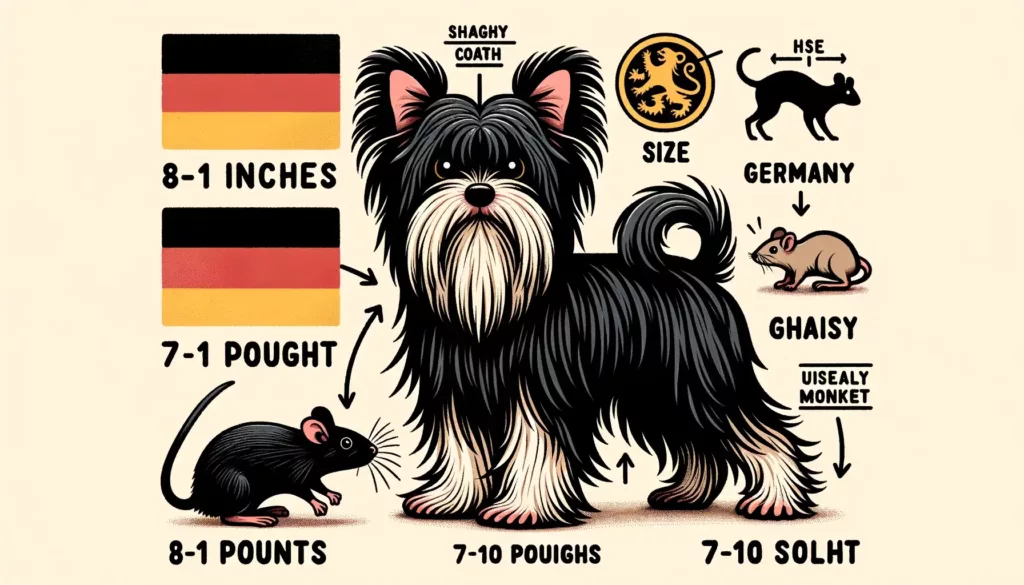
- Size: 8-11 inches, 7-10 pounds
- Origin: Germany, bred to hunt rodents
- Characteristics: Funny, confident, loyal to family, moderate exercise needs
- Considerations: Can be possessive with food and toys, challenging to housetrain, prone to snoring
The “monkey dog” earned its name from its monkey-like expression. Sturdy and compact, Affenpinschers make devoted companions to those who appreciate their spirited personalities and shaggy coat.
2. American Hairless Terrier

- Size: 12-16 inches, 12-16 pounds
- Origin: Louisiana, derived from Rat Terriers and other breeds
- Characteristics: Affectionate, energetic, alert watchdogs, thrive in warm climates
- Considerations: Require sunscreen and coats for sun protection of exposed skin
A newer breed, the American Hairless Terrier shares many attributes with Rat Terriers but with a hairless coat ideal for owners with allergies. Their protective nature makes them excellent watchdogs.
3. Australian Terrier
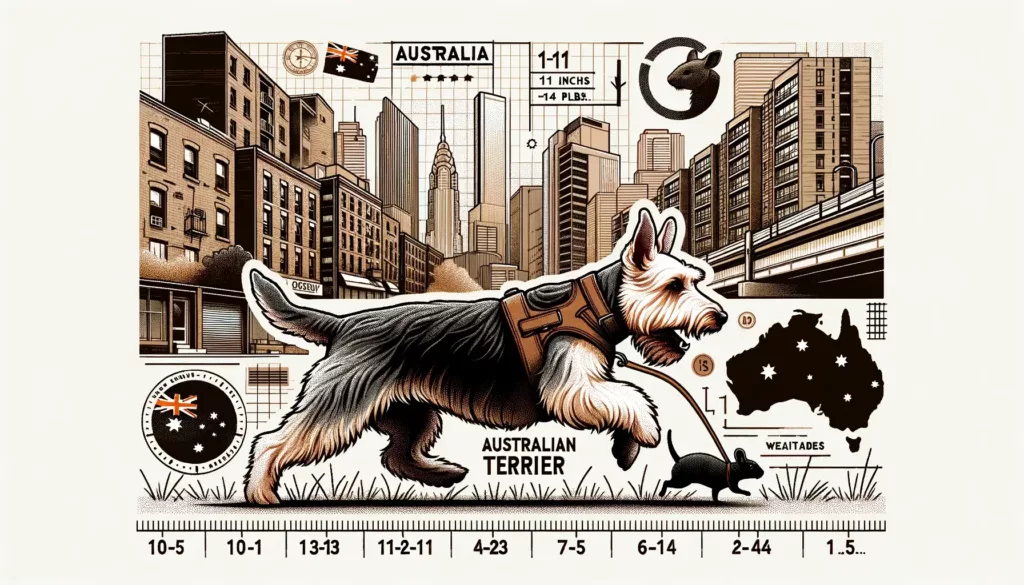
- Size: 10-11 inches, 9-14 pounds
- Origin: Australia, developed from British terriers
- Characteristics: Spirited, smart, alert, adaptable city dogs
- Considerations: Tendency to chase small animals, prone to barking and digging
Originally bred to control snakes and rodents, the Australian Terrier is a tough pint-sized worker renowned for its scrappy devotion. Its rugged coat necessitates weekly brushing and intermittent trims.
4. Bichon Frise
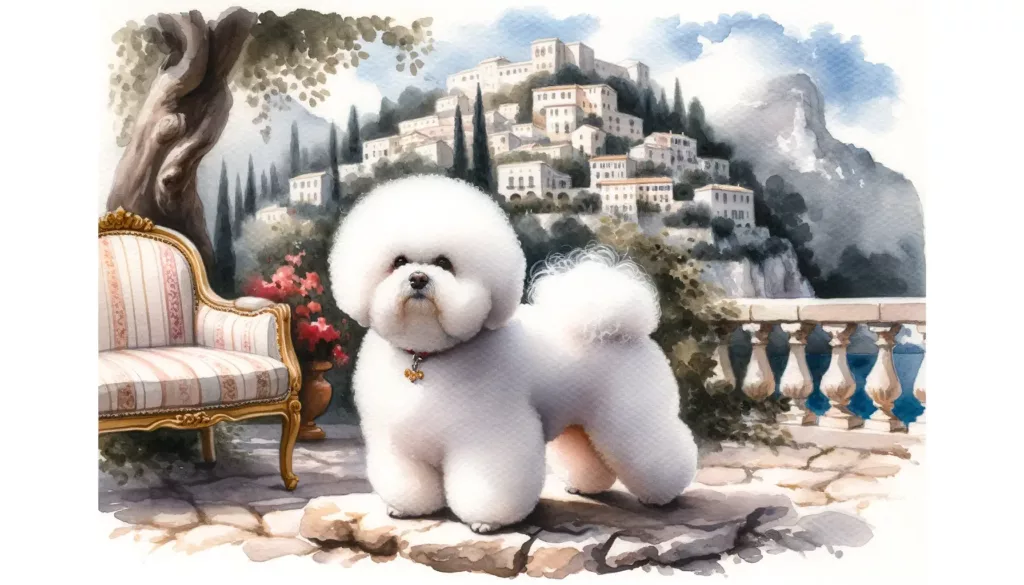
- Size: 9-12 inches, 7-12 pounds
- Origin: Mediterranean region, popularized by French nobles
- Characteristics: Charming, gentle, playful, affectionate, non-shedding
- Considerations: Prone to separation anxiety, requires regular professional grooming
With their fluffy white coats and cheerful attitudes, it’s easy to see why Bichon Frise gained fame as court dogs for European nobility. Their cute clownish nature persists in modern times.
5. Bolognese
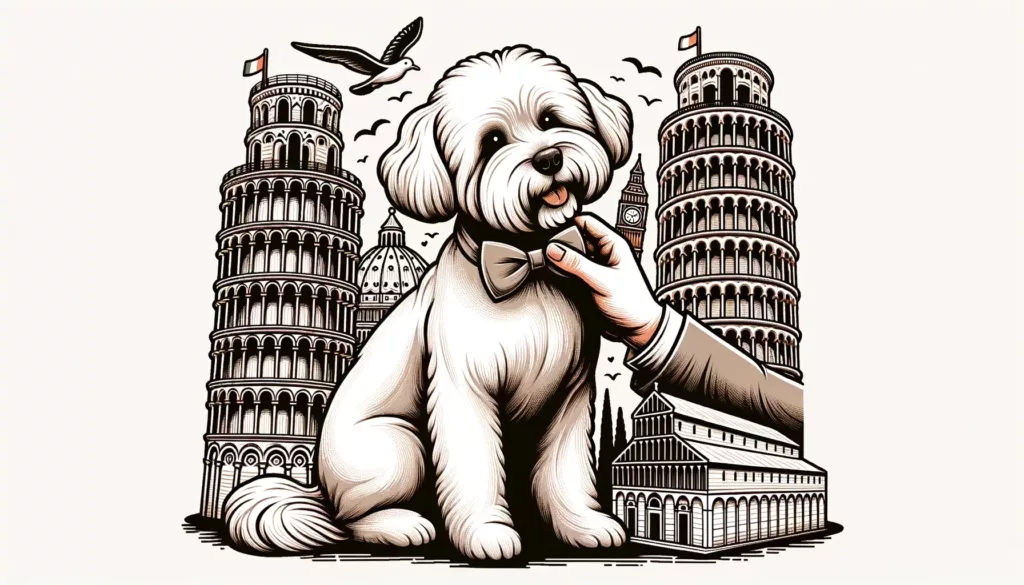
- Size: 9-12 inches, 5-9 pounds
- Origin: Italy
- Characteristics: Calm, loyal companion dogs, develops strong attachments, minimal shedding
- Considerations: Challenging to housetrain, can be wary with strangers, prone to separation anxiety
An ancient breed from Italy, the Bolognese craves constant companionship. Reserved around strangers, they flourish with ample time spent with their beloved owners engaging in play, cuddles, and training.
6. Brussels Griffon

- Size: 7-10 inches, 8-12 pounds
- Origin: Belgium, bred to hunt and kill rats
- Characteristics: Intelligent, alert, loyal, bold spirit in a small body
- Considerations: Sensitive digestive system, challenging to housetrain, prone to heat sensitivity
Don’t let their cute, cuddly look fool you – Brussels Griffons are tough, determined dogs. Beneath their sociable exterior lies a spirited breed ready to take on vermin of any size.
7. Cavalier King Charles Spaniel

- Size: 12-13 inches, 13-18 pounds
- Origin: United Kingdom, lapdog of British royalty
- Characteristics: Extremely affectionate, gentle, graceful, great with kids and other pets
- Considerations: Prone to heart and neurological conditions, require regular veterinary care
With their sweet, gentle natures, it’s easy to see why Cavalier King Charles Spaniels have reigned as a favorite of royalty. They love nothing more than snuggling up with their adored people.
8. Chihuahua
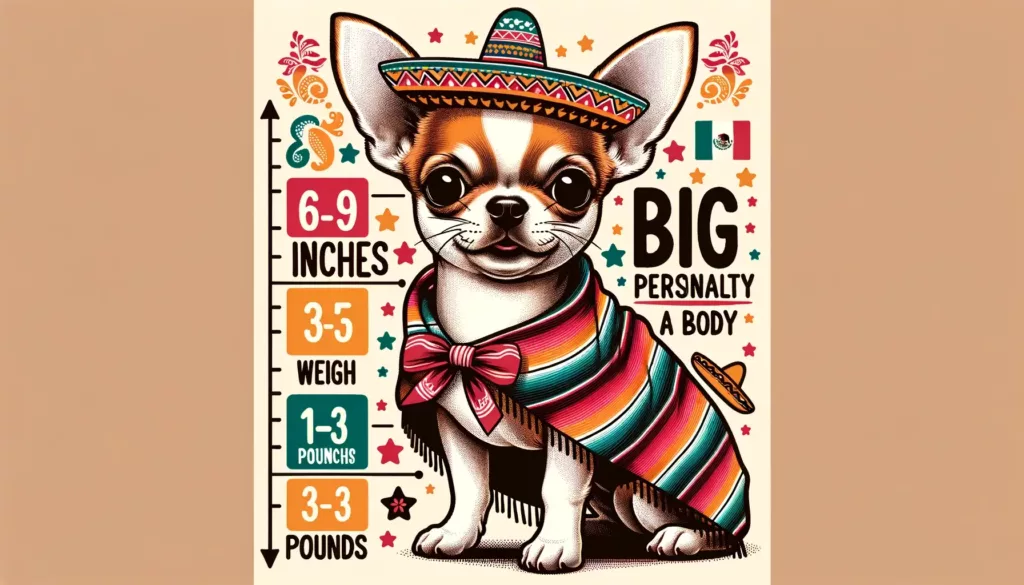
- Size: 6-9 inches, 3-6 pounds
- Origin: Mexico
- Characteristics: Sassy, charming, loyal, big dog in a small body
- Considerations: Prone to barking, challenging to housetrain, don’t tolerate roughhousing or cold weather
The tiny but mighty Chihuahua astounds with its larger than life confidence. What these pint-sized pups lack in size they make up for in attitude. Chihuahuas flourish with gentle, patient handling.
9. Chinese Crested
- Size: 11-13 inches, 8-12 pounds
- Origin: Africa, bred down from larger breeds
- Characteristics: Affectionate, playful, elegant appearance with hairless and powderpuff coat variations
- Considerations: Require diligent sunscreen/moisturizing of exposed skin, prone to dental issues
With their elegant grooming, the Chinese Crested turns heads for their unique appearance. A hairless variety provides a hypoallergenic option, but skin care is a must for this breed.
10. Coton de Tulear
- Size: 8-12 inches, 7-15 pounds
- Origin: Madagascar
- Characteristics: Bright, happy, playful, highly social, non-shedding coats
- Considerations: Need lots of time with family, otherwise prone to barking and separation anxiety
Named for their cotton-like coats, Coton de Tulear bond closely with their family. Their toy-like size but sturdy build allows them to keep up on adventures or cuddle at home.
11. English Toy Spaniel
- Size: 9-10 inches, 8-14 pounds
- Origin: United Kingdom
- Characteristics: Gentle, affectionate, elegant appeal, enjoys lounging on laps
- Considerations: Difficult to housetrain, prone to excessive barking, ear infections, and tooth issues
With their Cavalier King Charles Spaniel cousins, English Toy Spaniels have long held “royal dog” status due to their sweet, trusting nature and refined good-looks. They thrive on bonding with their special person.
12. Havanese
- Size: 8-11 inches, 7-13 pounds
- Origin: Cuba
- Characteristics: Outgoing, cheerful, highly trainable, non-shedding coats
- Considerations: Prone to separation anxiety if left alone, requires thorough and regular grooming
Once favored by Cuban aristocracy, Havanese win over admirers with their friendly, lively spirit. Few can resist their cute, fluffy coats and mustachioed faces. With ample socialization, they adapt well to city life.
13. Italian Greyhound
- Size: 13-15 inches, 7-14 pounds
- Origin: Italy and the Mediterranean, miniature version of Greyhound
- Characteristics: Intelligent, sweet-natured, athletic
- Considerations: Prone to separation anxiety, challenging to housetrain, dislikes cold weather, fragile bones
With their slender, miniature greyhound build, Italian Greyhounds are petite yet eye-catching companions. Quieter and more delicate than some small breeds, they appreciate soft bedding and peaceful homes.
14. Japanese Chin
- Size: 8-11 inches, 7-11 pounds
- Origin: Asia, lapdog of Chinese nobility
- Characteristics: Charming, sophisticated, calm indoor companion
- Considerations: Difficult to housetrain, prone to respiratory issues, intolerant of heat
Revered for centuries as companions to Chinese and Japanese nobility, Japanese Chins embody an elegant but playful spirit. They thrive when treated like royalty.
15. Maltese
- Size: 7-10 inches, 4-8 pounds
- Origin: Mediterranean region
- Characteristics: Gentle, playful, eager to please, minimal shedding
- Considerations: Prone to separation anxiety if left alone, requires daily grooming and exercise
With their show-stopping white coats, it’s easy to see why Maltese have been adored for centuries across royal courts and common households alike. Despite their glamorous look, they love silly games and cuddling up with their families.
16. Miniature Pinscher
- Size: 10-12 inches, 8-11 pounds
- Origin: Germany, bred down from Doberman Pinschers
- Characteristics: Clever, energetic, bold, watchdog abilities
- Considerations: Prone to barking and chasing behaviors, wary around small children
Nicknamed the “King of Toys,” Miniature Pinschers pack huge spirit into a small package. Their compact size but fearless nature makes them excellent watchdogs. With proper socialization, they can adapt well to city living.
17. Papillon
- Size: 8-11 inches, 5-10 pounds
- Origin: France and Belgium
- Characteristics: Friendly, energetic, intelligent, highly trainable
- Considerations: Prone to barking and separation anxiety without proper conditioning
With their butterfly-like ears and lively personality, Papillons charm owners with their petite frames but outsized fun-loving spirits. Their trainability makes them shine in obedience and agility events.
18. Pekingese
- Size: 6-9 inches, up to 14 pounds
- Origin: China, lapdog of Chinese nobility
- Characteristics: Regal, brave, loyal despite small size
- Considerations: Sensitive to heat, challenging to train, require careful handling of back
Once considered sacred animals and guardians of Buddhist temples, Pekingese retains a bold lion-like personality. Their confidence exceeds their compact stature.
19. Pomeranian
- Size: 7-12 inches, 3-7 pounds
- Origin: Germany, bred down from larger Spitz dogs
- Characteristics: Playful, energetic, intensely loyal companions
- Considerations: Frequent barking tendencies, can be aloof with strangers, can be difficult to housetrain
Pomeranians charm with their plush furry coats and fox-like faces. But beneath the cute exterior lies a clever, vivacious spirit. Poms delight in being active participants in their owners’ lives.
20. Pug
- Size: 10-13 inches, 14-18 pounds
- Origin: China, popularized in Europe later on
- Characteristics: Charming, mischievous, outgoing, affectionate, minimal exercise needs
- Considerations: Prone to heat exhaustion, sensitive to anesthesia, snoring, obesity, and eye injuries
Historically a favorite of Chinese emperors, the square-headed Pug with its wrinkled mug retains impish charm and loyalty befitting royalty. Weekly brushing and facial wrinkle care is a must.
21. Schipperke
- Size: 10-13 inches, 10-16 pounds
- Origin: Belgium, bred as watchdogs and ratters on barges
- Characteristics: Confident, smart, active, loyal family companions
- Considerations: Tendency for barking and chasing small critters, can be reserved with strangers
Schipperkes earned their name from their role as “little captains” guarding boats in Belgium. Today their energetic, alert nature persists, making them excellent watchdogs despite their small size.
22. Shih Tzu
- Size: 9-10 inches, 9-16 pounds
- Origin: China, treasured lapdog and companion
- Characteristics: Outgoing, affectionate, gentle nature, get along with other pets
- Considerations: Require daily exercise and extensive grooming
The Shih Tzu’s lush “lion’s mane” coat suit their regal personality as prized Chinese companions. Beneath their elegant tresses lies a friendly, fun-loving dog eager to please their family.
23. Toy Fox Terrier
- Size: 8-11 inches, 3-9 pounds
- Origin: United States, bred down in size from Smooth Fox Terriers
- Characteristics: Intelligent, alert, loyal, active, enjoys running and playing
- Considerations: Prone to barking and chasing instincts, don’t tolerate rough handling
American-bred Toy Fox Terriers retain the lively spirit and athleticism of their larger Smooth Fox Terrier ancestors. Their petite size coupled with their energetic nature makes them well-suited for apartment living provided they receive daily walks and playtime. With an eagerness to please, they thrive when trained positively and lavished with praise. Toy Fox Terriers flourish as companions to active singles, couples, and families.
24. Toy Manchester Terrier
- Size: 10-12 inches, 6-8 pounds
- Origin: England, bred down in size from the Standard Manchester Terrier
- Characteristics: Spirited, bright, loyal, highly trainable, devoted to their family
- Considerations: Prone to barking and chasing small critters, can be wary around strangers
Originally the Miniature Manchester Terrier, this feisty and compact terrier breed was renamed the Toy Manchester Terrier by the American Kennel Club in 1959. They inherit the eagerness and pep of their larger cousins. With early socialization and training, Toy Manchester Terriers can adapt well to city living. But their athleticism and energetic nature necessitates daily exercise and playtime.
25. Toy Poodle
- Size: 10 inches or under, 4-6 pounds
- Origin: Germany by breeding down the Standard Poodle
- Characteristics: Intelligent, eager to please, excels in obedience and agility, non-shedding coats
- Considerations: Professional grooming required, can develop anxiety issues if under-stimulated
Boasting the Poodle reputation for brains and versatility, the Toy Poodle’s petite size endears them to city dwellers. Their wash-and-wear coats shed minimally, though require professional grooming every 4-6 weeks. Toy Poodles excel at canine sports and learning tricks. With their sensitivity, they respond best to gentle, positive reinforcement training rather than harsh corrections.
26. Volpino Italiano
- Size: 9-12 inches, 7-10 pounds
- Origin: Italy
- Characteristics: Playful, intelligent, athletic, protective, suspicious of strangers
- Considerations: Regular brushing of dense coat required, prone to barking
Sometimes known as the Italian Spitz, the Volpino Italiano is believed to have ancient Roman ancestry. They make devoted companions but can be reserved around new people. Volpino Italianos needs daily mental and physical stimulation to avoid nuisance barking and destructive behaviors. Their stunning snowy coats require weekly brushing.
27. West Highland White Terrier
- Size: 10-11 inches, 13-22 pounds
- Origin: Scotland, bred to hunt foxes, badgers, and rodents
- Characteristics: Confident, spunky, energetic, loyal, excellent watchdogs
- Considerations: Frequent barking, digging tendencies, don’t tolerate roughhousing
Westies, as they are affectionately called, make feisty, devoted companions. They maintain strong protective instincts from their days eliminating vermin in Scotland. This confidence translates to loud alarm barking at anything suspicious. West Highland White Terriers delight in brisk walking, playtime, and learning tricks. Their wiry double coats require weekly brushing and grooming.
28. Yorkshire Terrier
- Size: 7-8 inches, 4-7 pounds
- Origin: England, popularized during the Victorian era
- Characteristics: Confident, bright, affectionate towards family members, adaptable to city living
- Considerations: Prone to barking, don’t tolerate rough play, delicate and injury prone
Yorkshire Terriers exhibit an abundance of self-importance befitting dogs once owned by Victorian English nobility. Beneath their bold exteriors lay bright, affectionate companions devoted to their families. Yorkies tend to forge strong bonds with one special person. Their long, silky coats require diligent daily brushing and periodic trims.
29. Cairn Terrier
- Size: 9-13 inches, 13-18 pounds
- Origin: Scotland, used to hunt foxes and rodents
- Characteristics: Playful, alert, energetic, very loyal to family
- Considerations: Tendency to bark and dig, moderate grooming requirements
Originating on the Isle of Skye, the plucky Cairn Terrier takes its name from the stone piles marking the burrows of itsquarry. They retain their strong hunting instincts. Cairn Terriers love brisk walks, playing fetch, and learning tricks. Their wiry, weather-resistant coats come in a variety of colors and require weekly brushing.
30. Norwich Terrier
- Size: 10 inches, 11-12 pounds
- Origin: England, bred to hunt small vermin and rodents
- Characteristics: Affectionate, energetic, fearless, devoted to family
- Considerations: Moderate shedding, tendency towards barking and chasing
One of the smallest working terrier breeds, Norwich Terriers are not just compact companions butretain their strong hunting drive. Affectionately nicknamed “Norsies,” they bond closely with their family while remaining somewhat reservedwith strangers. Norwich Terriers flourish with consistent, reward-based training. Their short coats require weekly brushing.
31. Norfolk Terrier
- Size: 9-10 inches, 11-12 pounds
- Origin: England, descendant of Norwich Terrier
- Characteristics: Fearless, energetic, loyal, adaptable
- Considerations: Moderate shedding, digging tendencies if bored
A close cousin and descendant of the Norwich Terrier, Norfolk Terriers share the same origins and spirited temperament. Their weather-resistant wiry coats come in striking red, wheaten, grizzle, and black-and-tan patterns. Norfolk Terriers thrive when provided daily mental and physical stimulation. Short weekly brushing keeps their coats neat.
32. Tibetan Spaniel
- Size: 10 inches, 9-15 pounds
- Origin: Tibet, used as companions and watchdogs
- Characteristics: Intelligent, energetic, loyal, vocal watchdogs
- Considerations: Reserved with strangers, weekly coat brushing
Some believe the Tibetan Spaniel originated from crossing small Tibetan breeds with Pekingese and Japanese Chin. They form close bonds and make vigilant watchdogs despite their small size. Tibetan Spaniels enjoy brisk walks but also relish napping on laps. Their long coats require weekly brushing and combing.
33. Tibetan Terrier
- Size: 14-17 inches, 18-30 pounds
- Origin: Tibet, sacred guardian dogs of Himalayan monasteries
- Characteristics: Affectionate, energetic, intelligent, loyal
- Considerations: Extensive grooming needed, exercise requirements
Used for centuries to guard Buddhist monasteries, Tibetan Terriers make warm and receptive companions. Reserved with strangers, they flourish around familiar people and other household pets. Their shaggy double coats must be brushed thoroughly multiple times per week. Tibetan Terriers enjoy active families that provide ample mental stimulation through training and playtime.
34. Boston Terrier
- Size: 15-17 inches, 10-25 pounds
- Origin: United States, mixing English Terrier and English Bulldog
- Characteristics: Friendly, lively, highly trainable, short low-maintenance coats
- Considerations: Prone to flatulence and breathing issues, sensitive to heat
Nicknamed “American Gentlemen,” Boston Terriers blend the best attributes of their bulldog and terrier lineage. Their enthusiasm makes training fun and rewarding. Boston Terriers can overheat easily and require climate-controlled living spaces. Their minimal coat care and moderate exercise needs make them ideal urban companions.
35. French Bulldog
- Size: 11-12 inches, 16-28 pounds
- Origin: France, bred down in size from English Bulldogs
- Characteristics: Playful, charming, lower exercise requirements, minimal grooming
- Considerations: Heat sensitivity, breathing issues, prone to back problems
The “clown dogs of France” delight owners with their amusing antics and affectionate nature. Under their goofball exterior, French Bulldogs remain remarkably calm companions. Their minimal exercise needs make them ideal choices for city living. Owners must monitor their sensitive health and provide access to climate-controlled spaces.
36. Lhasa Apso
- Size: 10-11 inches, 12-18 pounds
- Origin: Tibet, sacred palace guard dogs
- Characteristics: Bold, energetic, loyal, independent thinkers
- Considerations: Extensive grooming requirements, aloof with strangers
Historically honored as sacred watchdogs guarding Buddhist monasteries and palaces, Lhasa Apsos retains a sense of nobility. Beneath their long flowing coats and dignified expression, they are lively, mischievous, and very determined. Extensive grooming is mandated for their coats. Reserved with strangers, Lhasa Apsos are devoted guardians of their families.
37. Miniature Schnauzer
- Size: 12-14 inches, 11-20 pounds
- Origin: Germany by breeding down the Standard Schnauzer
- Characteristics: Intelligent, spunky, low-shedding, versatile working dogs
- Considerations: Potential barking and aggression issues, occasional stubbornness
Beloved for their distinctive scruffy beards and eyebrows, Miniature Schnauzers maintain terrier traits in a sturdy compact frame. Clever and devoted to their people, they excel at numerous dog sports, watchdog duties, and hunting roles. Early training and socialization is key to curb any problematic behaviors. Weekly coat grooming maintains their smart salt-and-pepper appearance.
38. Parson Russell Terrier
- Size: 12-14 inches, 13-17 pounds
- Origin: England, bred to assist on fox hunts
- Characteristics: Energetic, intelligent, athletic, tenacious, loyal
- Considerations: High exercise needs, tendency to chase critters
Sharing lineage with the early fox hunting hounds of Reverend John Russell, Parson Russell Terriers exhibit limitless energy and drive. Sometimes still known as Jack Russell Terriers, they demand extensive daily exercise and stimulation. With training, their restless nature can be channeled into agility, flyball, and obedience work. They flourish with active, experienced owners.
39. Russell Terrier
- Size: 10-12 inches, 8-14 pounds
- Origin: England, developed from smaller-sized Parson Russell Terriers
- Characteristics: Spirited, alert, energetic, highly trainable
- Considerations: Moderate shedding, exercise requirements
Seeking a smaller and calmer pet than the high-octane Parson Russell Terrier, English breeders developed the Russell Terrier. Sharing much of the same breeding, Russell Terriers retain a lively, playful spirit with less intense exercise requirements. They thrive when provided daily brisk walks and play sessions along with consistent positive reinforcement training.
40. Scottish Terrier
- Size: 10 inches, 19-22 pounds
- Origin: Scotland, used to hunt foxes and badgers
- Characteristics: Spirited, courageous, dignified but devoted companions
- Considerations: Moderate grooming needs, exercise requirements, digging tendencies
Nicknamed the “Diehard,” Scottish Terriers exhibit an independent spirit befitting their rugged heritage. Their wiry, weather-resistant coats come in black, brindle, and wheaten colors. Scotties require weekly brushing and stripping to maintain their tidy appearance. Brisk walking and free play in fenced yards provides ideal exercise along with mental stimulation.
Conclusion
Finding your perfect small dog ultimately comes down to thoroughly researching breeds, being realistic about your lifestyle and experience level, and selecting a responsible breeder.
While tiny in stature, small dogs deliver huge amounts of companionship and joy to our lives. Their compact size makes them ideal for urban owners and modest homes. With minimal exercise needs and their highly adaptable nature, petite pooches can thrive in virtually any environment.
But each miniature breed comes with their own unique personality, care requirements, and health considerations. Make sure to select the small dog that best matches your household needs and experience level. Also budget the time and costs of proper grooming, training, veterinary care, and nutrition to keep your pocket-sized pup healthy.
While a big commitment, welcoming a small dog into your home is incredibly rewarding. If you seek a loyal, lively furry friend, a pint-sized pooch could be the perfect fit! They offer all the love of larger breeds in a convenient, portable package. Just be sure to first research breeds extensively to find both a dog and breeder that suits your lifestyle.
The tiny pitter patter of little paws will quickly brighten up your home. So consider opening both your house and your heart to one of the engaging, lovable small dogs profiled here. Your new four-legged friend awaits!
Hi, I’m John and I love dogs. Ever since I was a kid, I always wanted to have a furry friend by my side. I grew up with a golden retriever named Max, who taught me a lot about loyalty, friendship, and fun. He was my best buddy for 12 years, and I miss him every day.
